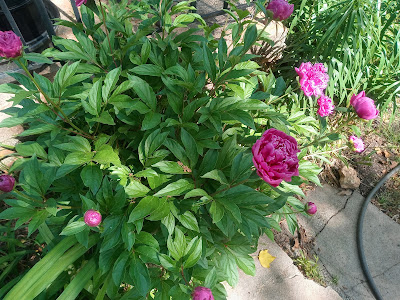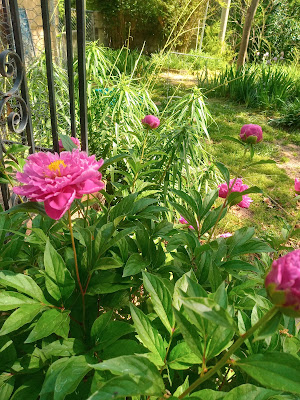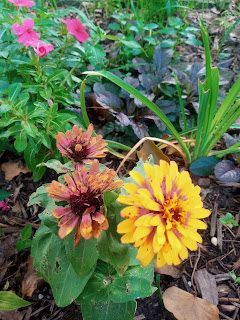If you prefer the natural method for fertilizing your soil and lawn grass then grow clover. Clover will fix the nitrogen that feeds your grass and it will help in maintaining moisture and stop weeds from taking over your lawn. We grow clover and find that our lawn is easier to care for because it doesn’t require water or fertilizer.
Here is a photo of the clover growing in our side yard. Note the grasses and clover look lush and green. My husband mows it and we walk on the clover and it bounces right back.
What we like
about clover is that it stays green. Also, the nectar-rich flowers are very
fragrant and they are beneficial to honey bees. The clover attracts wildlife; whitetail deer, wild turkey, and wild rabbit. (all eat the clover but they eat the tops and don't remove the roots or the plant)
We planted Dutch
white clover seeds in the early spring in our side yard which gets sun in the morning and part- sun to shade in the afternoon. My husband raking the entire
area to remove the dead grasses and loosen the soil. He then mixed clover seed (which is very
small) with sand and spread it by hand in the planting area. The seed and sand were covered with a light
layer of topsoil and then watered well after the seeds were planted.
We watered daily
until clover had grown in. Know that once the clover is established it does not
require regular watering. Clover is drought tolerant and will stay green during
extreme heat and cooler seasons.
In August when
our grass turns brown due to the extreme heat, the Dutch white clover seems to
thrive.
Clover grows
well in sun, part sun, and shade.




























